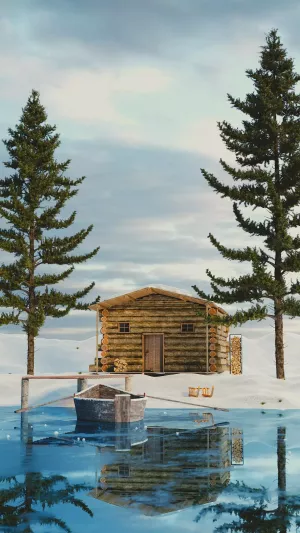When you think of life in the snow, Iceland is the first place that comes to mind. So what would life in icy Iceland be like?
Iceland is the best country for women to live in. The work week is 40 hours, so you can work whenever you want. Women can take 2 extra days off a month.
Over 80% of women in Iceland have their own jobs. It is the country with the highest female employment rate in the world.
From managing family finances, having children, etc., to being involved in the economy of the whole country.
Teachers in Icelandic schools keep girls and boys separate. Girls are nurtured to be bold, and independent and learn a variety of life skills. Boys are developed to be emotional, attentive, and group-oriented.
Iceland is the smallest of the 5 Nordic countries and has the smallest population. It is also the country with the highest level of happiness in the world.
Many people say Iceland is the least earth-like country. The unique geomorphic environment makes Iceland the most lunar-like country in the world.
It is said that living in Iceland has one of the highest happiness ratings in the world. The depression quotient is probably even higher when you learn about the local weather.
You don't see the sun in Iceland for more than five hours a week combined.
The sky is grey all the time. It's windy, with 5 minutes of rain, 5 minutes of hail, and 5 minutes of sunshine, and the weather is unpredictable.
The water used to flush toilets in Iceland is mineral water, so you can drink it straight from the bottle. Iceland has some of the best water resources in the world, so the locals drink water straight from the tap.
The tap water has the taste of mineral water and is a little sweet and tasty. It's not bad at glacial meltwater.
Iceland is in a zone of relatively frequent volcanoes, and geothermal energy solves many problems.
There is no need to boil hot water for bathing, and because of the many volcanoes, Iceland becomes the country with the hottest springs in the world, and Icelanders are super fond of them.
Iceland has just over 300,000 people, mostly living near the capital Reykjavik, which accounts for two-thirds of the population.
The rest of the people live in a few towns. There are only a few hundred or a few thousand people living in the towns, but the environment is superb.
The population is concentrated, so there are no railways in Iceland. Iceland is mainly dependent on fishing and tourism, but livestock farming is also important. Due to the small amount of arable land, Iceland relies heavily on imports of food, vegetables, and fruit for everyday life.
All shops and restaurants in Iceland, except for the capital Reykjavik, close at 5 pm. You can't even find a place to eat if you want to after 7 or 8 pm when you get hungry, and after closing time is their rest time.
At the beginning of the Icelandic summer, everyone in companies and residential buildings goes out into the streets to pick up rubbish and do a clean-up.
Armed with biodegradable plastic bags and tongs, the rubbish is revealed on the roadside once the snow and ice have melted. Put it in the rubbish bags and then the government will send a special car to come and collect all these bags.
All Icelanders take care of their environment and if they see rubbish around their homes, they pick it up. After picking up the rubbish in the street, we all get together for a BBQ and grill some bread and hot dogs.





